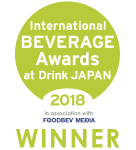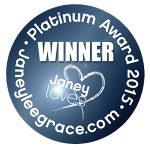Vibrio
Vibrio is a genus of bacteria that includes various species, some of which can significantly impact human health and cause disease. Here is an overview of how Vibrio interacts with human health:
- Food-borne illness: Vibrio species, such as V. parahaemolyticus and V. vulnificus, are responsible for foodborne illnesses, primarily associated with the consumption of raw or undercooked seafood, especially oysters. Symptoms can include diarrhoea, abdominal pain, nausea, vomiting, and fever.1Seelman SL, Whitney BM, Stokes EK, Elliot EL, Griswold T, Patel K, Bloodgood S, Jones JL, Cripe J, Cornell J, Luo Y, Williams DL, Boyle MM, Cahoon J, Brennan C, Wildey LM, Grover VM, Simonson S, Crosby AJ, Bazaco MC, Viazis S. An Outbreak Investigation of Vibrio parahaemolyticus Infections in the United States Linked to Crabmeat Imported from Venezuela: 2018. Foodborne Pathog Dis. 2023 Apr;20(4):123-131. doi: 10.1089/fpd.2022.0078.2Bonnin-Jusserand M, Copin S, Le Bris C, Brauge T, Gay M, Brisabois A, Grard T, Midelet-Bourdin G. Vibrio species involved in seafood-borne outbreaks (Vibrio cholerae, V. parahaemolyticus and V. vulnificus): Review of microbiological versus recent molecular detection methods in seafood products. Crit Rev Food Sci Nutr. 2019;59(4):597-610. doi: 10.1080/10408398.2017.1384715.
- Wound infections: Vibrio species can also cause wound infections, especially after exposure to contaminated water, which can lead to cellulitis, necrotising fasciitis, or septicemia. Prompt treatment is essential to prevent complications and life-threatening outcomes.3Baker-Austin C, Oliver JD, Alam M, Ali A, Waldor MK, Qadri F, Martinez-Urtaza J. Vibrio spp. infections. Nat Rev Dis Primers. 2018 Jul 12;4(1):8. doi: 10.1038/s41572-018-0005-8.4Kuo YL, Shieh SJ, Chiu HY, Lee JW. Necrotizing fasciitis caused by Vibrio vulnificus: epidemiology, clinical findings, treatment and prevention. Eur J Clin Microbiol Infect Dis. 2007 Nov;26(11):785-92. doi: 10.1007/s10096-007-0358-5.5Elnahla A, Attia AS, Toraih E, Guidry C, Akkera M, Schroll R, Killackey M, Nichols R, Kandil E. Prognostic Factors of Mortality in Vibrio vulnificus Sepsis and Soft Tissue Infections: Meta-Analysis. Surg Infect (Larchmt). 2021 Nov;22(9):928-939. doi: 10.1089/sur.2020.243.
- Cholera: V. cholerae is responsible for cholera, a severe diarrheal disease that can cause rapid dehydration and, if left untreated, can be fatal. Cholera is typically spread through contaminated food or water and primarily affects populations in developing countries with poor sanitation and water infrastructure.6Ojeda Rodriguez JA, Kahwaji CI. Vibrio cholerae Infection. [Updated 2022 Sep 1]. In: StatPearls [Internet]. Treasure Island (FL): StatPearls Publishing; 2023 Jan-. Available from: https://www.ncbi.nlm.nih.gov/books/NBK526099/
- Antibiotic resistance: Vibrio species can develop antibiotic resistance, complicating the treatment of infections. Some strains exhibit multidrug resistance, which necessitates the use of alternative treatments or combination therapy.7Dutta D, Kaushik A, Kumar D, Bag S. Foodborne Pathogenic Vibrios: Antimicrobial Resistance. Front Microbiol. 2021 Jun 30;12:638331. doi: 10.3389/fmicb.2021.638331.8Grudlewska-Buda K, Bauza-Kaszewska J, Wiktorczyk-Kapischke N, Budzyńska A, Gospodarek-Komkowska E, Skowron K. Antibiotic Resistance in Selected Emerging Bacterial Foodborne Pathogens-An Issue of Concern? Antibiotics (Basel). 2023 May 9;12(5):880. doi: 10.3390/antibiotics12050880.
- Preventing infections: Reducing the risk of Vibrio infections involves proper food handling, thorough cooking of seafood, and avoiding exposure to contaminated water, especially for individuals with open wounds. In regions affected by cholera, improvements in sanitation, access to clean water, and vaccination campaigns are essential to control outbreaks.9Chowdhury F, Ross AG, Islam MT, McMillan NAJ, Qadri F. Diagnosis, Management, and Future Control of Cholera. Clin Microbiol Rev. 2022 Sep 21;35(3):e0021121. doi: 10.1128/cmr.00211-21.
In summary, Vibrio bacteria play a significant role in human health, causing foodborne illnesses, wound infections, and severe conditions like cholera. Understanding and addressing the risks associated with the presence of Vibrio species in your microbiome sample is vital for protecting the delicate balance of your gut microbial ecosystem.
Where to find Vibrio in the Chuckling Goat Gut Microbiome Test
You will find your Vibrio scores in the “Pathogens” report in your Chuckling Goat Gut Microbiome Test results. Guidance on how to work with pathogens like Vibrio will be featured in your Personal Action Plan. Please note that this information is not intended to be a substitute for professional medical advice, diagnosis, or treatment. Always seek the advice of your GP or other qualified health provider if you have any questions about Vibrio.
Synonyms: Vibrio species, Vibrio parahaemolyticus, Vibrio vulnificus, Vibrio infection
Important disclaimer
The Chuckling Goat Gut Microbiome Handbook is an educational resource built to translate complex science into plain English. The information provided on this page is not intended to be a substitute for professional medical advice, diagnosis, or treatment. Always seek the advice of your GP or other qualified health provider with any questions you may have regarding a medical condition. Always check with your GP for interactions with medications/health conditions before changing your diet or starting to take food supplements.
References
- 1Seelman SL, Whitney BM, Stokes EK, Elliot EL, Griswold T, Patel K, Bloodgood S, Jones JL, Cripe J, Cornell J, Luo Y, Williams DL, Boyle MM, Cahoon J, Brennan C, Wildey LM, Grover VM, Simonson S, Crosby AJ, Bazaco MC, Viazis S. An Outbreak Investigation of Vibrio parahaemolyticus Infections in the United States Linked to Crabmeat Imported from Venezuela: 2018. Foodborne Pathog Dis. 2023 Apr;20(4):123-131. doi: 10.1089/fpd.2022.0078.
- 2Bonnin-Jusserand M, Copin S, Le Bris C, Brauge T, Gay M, Brisabois A, Grard T, Midelet-Bourdin G. Vibrio species involved in seafood-borne outbreaks (Vibrio cholerae, V. parahaemolyticus and V. vulnificus): Review of microbiological versus recent molecular detection methods in seafood products. Crit Rev Food Sci Nutr. 2019;59(4):597-610. doi: 10.1080/10408398.2017.1384715.
- 3Baker-Austin C, Oliver JD, Alam M, Ali A, Waldor MK, Qadri F, Martinez-Urtaza J. Vibrio spp. infections. Nat Rev Dis Primers. 2018 Jul 12;4(1):8. doi: 10.1038/s41572-018-0005-8.
- 4Kuo YL, Shieh SJ, Chiu HY, Lee JW. Necrotizing fasciitis caused by Vibrio vulnificus: epidemiology, clinical findings, treatment and prevention. Eur J Clin Microbiol Infect Dis. 2007 Nov;26(11):785-92. doi: 10.1007/s10096-007-0358-5.
- 5Elnahla A, Attia AS, Toraih E, Guidry C, Akkera M, Schroll R, Killackey M, Nichols R, Kandil E. Prognostic Factors of Mortality in Vibrio vulnificus Sepsis and Soft Tissue Infections: Meta-Analysis. Surg Infect (Larchmt). 2021 Nov;22(9):928-939. doi: 10.1089/sur.2020.243.
- 6Ojeda Rodriguez JA, Kahwaji CI. Vibrio cholerae Infection. [Updated 2022 Sep 1]. In: StatPearls [Internet]. Treasure Island (FL): StatPearls Publishing; 2023 Jan-. Available from: https://www.ncbi.nlm.nih.gov/books/NBK526099/
- 7Dutta D, Kaushik A, Kumar D, Bag S. Foodborne Pathogenic Vibrios: Antimicrobial Resistance. Front Microbiol. 2021 Jun 30;12:638331. doi: 10.3389/fmicb.2021.638331.
- 8Grudlewska-Buda K, Bauza-Kaszewska J, Wiktorczyk-Kapischke N, Budzyńska A, Gospodarek-Komkowska E, Skowron K. Antibiotic Resistance in Selected Emerging Bacterial Foodborne Pathogens-An Issue of Concern? Antibiotics (Basel). 2023 May 9;12(5):880. doi: 10.3390/antibiotics12050880.
- 9Chowdhury F, Ross AG, Islam MT, McMillan NAJ, Qadri F. Diagnosis, Management, and Future Control of Cholera. Clin Microbiol Rev. 2022 Sep 21;35(3):e0021121. doi: 10.1128/cmr.00211-21.
















